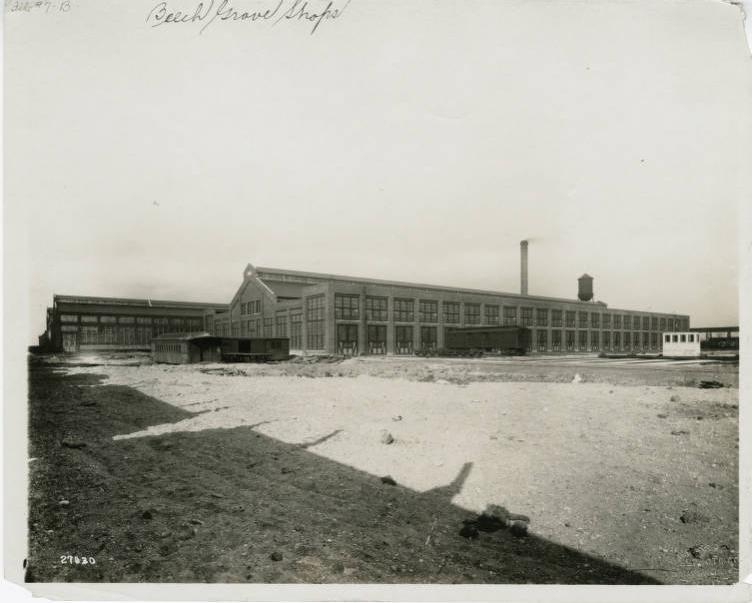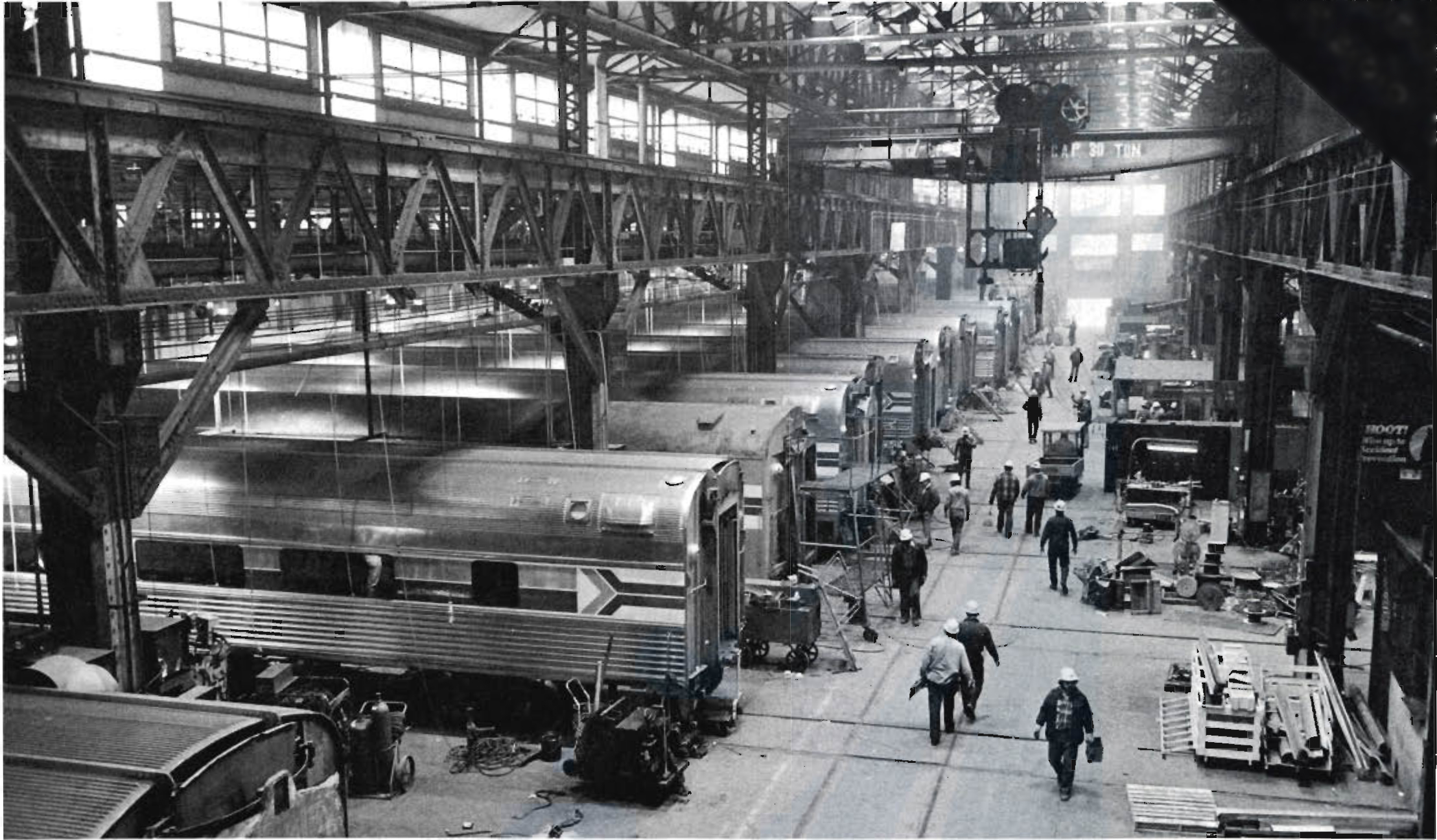The Amtrak railroad system uses the Beech Grove Railroad Shops to overhaul and rebuild locomotives and other railroad rolling stock. Once referred to as the “greatest locomotive hospital in the world,” the Beech Grove Railroad Shop covers over 100 acres of former farmland in the community of in southeastern Marion County. It is a major repair facility of the National Railroad Passenger Corporation (Amtrak) and supplies components to other Amtrak maintenance facilities.

Between 1906 and 1910, the Big Four Railroad, a major subsidiary of the former Company, purchased 640 acres to construct a $5 million multi-building complex primarily for comprehensive repair work on its hundreds of steam locomotives. The locomotives were stripped down and overhauled along an extensive production line stretching throughout the massive facility, with mules providing the temporary locomotion for the ailing machines over this internal rail network. Cottages and businesses sprang up in Beech Grove as workers arrived to build the shops. Beech Grove streets were laid out and named for cities served by the Big Four Railroad—Albany, Buffalo, Cleveland, and Detroit.
Several large structures, some of them providing over 200,000 square feet of floor space, housed the several phases of the locomotive overhaul. In 1910, there were 700 employees at the Beech Grove shop. During World War II, the number of employees reached 5,000. Locomotive repair activity at Beech Grove during the postwar years paralleled the increase and later decrease in the nation’s rail traffic.

Ownership of the Beech Grove facility went to the Penn Central Railroad Company in 1971 and four years later to Amtrak on April 1, 1975. A major reason Amtrak officials selected the Beech Grove site was its proximity to Chicago and the many rail lines converging there. This arrangement gave Amtrak’s national “fleet” of locomotives and passenger cars optimum access to repair service. Having acquired a railroad repair complex with many positive features, Amtrak continued to use the equipment from the Big Four Railroad’s ownership. The company also implemented a five-year, $22 million improvement plan at the Beech Grove shop: overhauling diesel locomotives and passenger service rolling stock and modernizing the facility.
By the 1980s, Amtrak adopted policies at the Beech Grove shop on reducing energy consumption, reducing air pollution, and improving employee working conditions. The shop also focused on rehabilitation rather than discarding its rolling stock and purchasing new equipment. This saved the company over $600,000 per car. The cycle time required to overhaul equipment completely was 112 days for a diesel locomotive and 70 days for passenger, sleeping, and dining cars.

In 1992, the Beech Grove shop serviced 55 diesel locomotives and 185 passenger cars, employed 1,100 workers, and had an operating budget approaching $196 million. In early 1993, however, the shop faced layoffs and a reduction of services due to decreased federal funding for Amtrak.
The American Recovery and Reinvestment Act of 2009 provided grants to the Beech Grove shop that allowed the restoration of 9 Superliner cars and 11 diesel locomotives, helping to expand train capacity and growth in ridership. Despite this growth, the shop had just 550 employees by 2012.
Concerns over job loss continued with the closing of the Hoosier State Line in 2019 due to a lack of state funding. The line previously brought cars from around the country to the Beech Grove yard for repair. Its end resulted in less frequent stops at Beech Grove and so less business and more difficulty in competing for new contracts.
CITE THIS ENTRY
APA:
Bogle, V. M. (2021). Beech Grove Railroad Shop. Encyclopedia of Indianapolis. Retrieved Jan 5, 2026, from https://indyencyclopedia.org/beech-grove-railroad-shop/.
MLA:
Bogle, Victor M. “Beech Grove Railroad Shop.” Encyclopedia of Indianapolis, 2021, https://indyencyclopedia.org/beech-grove-railroad-shop/. Accessed 5 Jan 2026.
Chicago:
Bogle, Victor M. “Beech Grove Railroad Shop.” Encyclopedia of Indianapolis, 2021. Accessed Jan 5, 2026. https://indyencyclopedia.org/beech-grove-railroad-shop/.

Help improve this entry
Contribute information, offer corrections, suggest images.
You can also recommend new entries related to this topic.